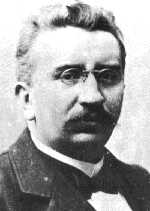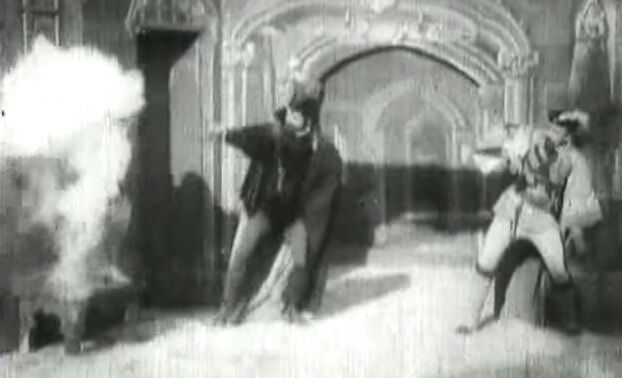
Okay, starting a thread now on family values on the American homefront during WW2. It goes some unhappy places, sorry, and got away from me a bit at the end, sorry again. But ugly truths are better than pretty lies, and pretty lies are what we're fed about the homefront.
0/
0/
WW2: a time of great upheaval in the US. More than 15 million civilians moved to new counties over the course of the war. Wartime spending meant formerly poor people in suddenly available jobs were often flush with money. Psychological pressures due to the war were immense.
1/
1/
So many civilians acted in ways that seemed entirely alien to how “real Americans” behaved. The result was a homefront whose strangeness seemed to match the strangeness that soldiers & sailors were experiencing at sea & in foreign countries. Everything became different.
2/
2/
Necessary context for this thread: a lot of Americans—most, arguably—felt that the outcome of the war was genuinely in doubt for most of the war, and that it was quite possible that they and everyone they knew would die during the war from invasion or bombing or worse.
3/
3/
This attitude led to perhaps the archetypal statement about the US homefront attitudes and civilians’ mental landscape. An American G.I. wrote, in early 1942, “By most people’s standards we were immoral, but we were young and could die tomorrow.”
4/
4/
So you got statistics like these: juvenile delinquency up 30% among 11-13 yr olds in 1942 in NYC; up 24% 1938-1943 in Detroit; nationally, j.d. cases among all juvenile ages increased by 72% between 1940-1945, despite the total juvenile population dropping by 5%.
5/
5/
One prominent example was the teenaged “wolf packs” of Washington state, which drew national attention in 1943 for their binge drinking, destruction of movie theaters, and assaults on women. Many in the wolf packs had KIA fathers or came from broken homes; many didn’t.
6/
6/
Matching the rise in violence was the abrupt rise in teenage sexual activity. 1940: less than 40% of high school students polled approved of premarital sex, but between 1939-1945 out-of-wedlock births rose by 42% (650,000 babies officially “illegitimate”).
7/
7/
And venereal disease, esp. syphilis and gonorrhea, became much more widespread than pre-war. Between 1941-1944 the venereal disease rate for women ages 15-18 rose 204%. Nationally the abortion rate rose around 40%, with women dying 17% of the time.
8/
8/
Given the rampant “we were young and could die tomorrow” mentality, it’s not surprising that everyone—including teenage women—was more sexually active than before the war, and in ways that gvt officials, clergy, and mainstream thought-makers disapproved of.
9/
9/
The following is not meant to single out teenage women—teenage men and adult men, *especially* soldiers and sailors, were also a lot more sexually active. Army studies showed that less than 1% (repeat: less than 1%) of American soldiers remained celibate overseas.
10/
10/
But the messages instilled into American men were a lot more pro-sex than the far more mixed messages given to American women, who were told throughout the war not to be “sluts” but also to be giving with their time, attention, and esp. their affection to service members.
11/
11/
The US military took it as a given that men wanted and deserved sex. Clergy & civilian gvt wanted to *suppress* sexual activity; the military wanted to *regulate* it. Civilians were idealists; military men were pragmatists. Ultimately the military attitude won.
12/
12/
Men from all the military branches became notorious for sexual activity with teenage women, who were equal agents in the (often one night long) relationships. Sexually active teenage women flocked to Army & Navy bases and made themselves available to servicemen.
13/
13/
The reasons the teenagers did this were many: out of a patriotic impulse (no joke, this was the primary stated motivation); for the excitement; because they wanted to; because they were horny; & often because it was an easy & quick way to earn money, even if it wasn’t much.
14/
14/
The teenagers got slapped with many labels: “Victory Girls,” “Cuddle Bunnies,” “pickup girls,” “Khaki-wackies,” “good-time Charlottes,” and “patriotutes.” They ranged from 12-21, with most between 14-17. In Richmond, 78% were 17-25; in Norfolk, median age was 17.
15/
15/
Teenagers would drive some distances to hang around the military bases and pick up servicemen. It became such a problem for the military brass that colonels and even generals were forced to issue (widely-flouted) orders barring servicemen from going near the teenagers.
16/
16/
Accompanying all this was a rise in teenage prostitution—something that was national, not local, and was not limited to the big cities and military bases. In 1942 25% of the unmarried women in a Jacksonville, FL graduating high school class were pregnant via prostitution
17/
17/
“Misconduct” by teenage women was so widespread in San Francisco that the police patrolled bus stations and thoroughfares and turned back unescorted teenagers attempting to enter the city.
18/
18/
In rural IL, near an Army training base, teenaged patriotutes picked up servicemen at soda fountains & movie theaters and had sex with them in the women’s father’s cars, four to five men a night sometimes, often for the cost of a Coke, meal, or movie ticket.
19/
19/
Naturally, the police tried to stop this sort of thing. State liquor and curfew statutes were tightened. The police regularly swept bars and closed down brothels. Bail for suspected teenaged patriotutes was increased to insupportable amounts—in SF, from $25 to $2500.
20/
20/
Nothing worked. Nationally, arrests of suspected teenaged prostitutes increased 70% 1941-1945, with over half the women arrested for “sexual offenses” being under 21. In cities with large transient military populations, the number of teenagers arrested increased by 300%.
21/
21/
The military did its best to direct servicemen away from “bad good girls” & toward professionals in brothels, which G.I.s in lonelier & more remote locations approved of. A significant number of servicemen made requests of their commanding officers for official brothels.
22/
22/
General Patton was outspoken in his support for official Army brothels.
In Hawaii, where brothels & “regulated” prostitution were legal until 1944, military sentiment about brothels clashed violently with civilian views in 1942.
23/
In Hawaii, where brothels & “regulated” prostitution were legal until 1944, military sentiment about brothels clashed violently with civilian views in 1942.
23/
The police on the islands launched a harassment campaign against sex workers. Brothel operators retaliated by going on strike & closing all but three brothels; the spokeswomen for the sex workers & brothels said they were “essential to the welfare of the U.S. armed services.”24/
The ensuing lines of angry servicemen were so hostile and near riotous toward civilian police that military police were called in to control them. Eventually the Hawaiian police departments agreed to drop the harassment campaign against sex workers.
25/
25/
There were also the “Allotment Annies,” women who married young soldiers just before they shipped out solely for the servicemen’s fifty-dollar-a-month allotment. When the men returned, the women would demand a divorce.
26/
26/
Some Allotment Annies even specialized in bigamy, taking repeated trips to Tijuana and marrying several servicemen there in the space of a few days.
(hey, a woman’s gotta do what a woman’s gotta do, no judgment here).
27/
(hey, a woman’s gotta do what a woman’s gotta do, no judgment here).
27/
The newspapers & radio broadcasts, let us not forget, were full of coverage of Errol Flynn’s fall 1942 trial on charges of statutory rape of two seventeen-year-old women, and Charlie Chaplin’s 1943 paternity suit, which dragged into 1944 in a very ugly fashion.
28/
28/
(The performance of the reporters on those two cases was infamous and appalling. Every single horrible way you can treat women in a rape trial or paternity suit was used by the reporters toward the women involved. It was horrific).
29/
29/
And then there was Frank Sinatra. He was never charged with anything, but servicemen HATED him. He was 4-F (perforated eardum or “not acceptable material from a psychiatric standpoint”—you decide!) and the object of intense adulation by an army of teenaged bobby soxers.
30/
30/
A columnist claimed (w/out evidence) that Sinatra had paid $40K to avoid service. To servicemen he was a draft-dodger who simply had to be sleeping his way through his ranks of female devotees. So they loathed him unreservedly (close to Vietnam soldiers & John Wayne levels). 31/
This is why portrayals of the homefront as some idyllic “we were all in it together” setting give me hives. (Looking at you, WW2 roleplaying games & movies). It’s a whitewashing of reality & it caters to the deliberate historical ignorance of the white middle class.
32/
32/
There were the strikes: 14,000 from 1941-1945. There were constant attacks on POC: 15 lynchings, the Port Chicago “mutiny”, riots in Beaumont TX, Greenville PA, Mobile AL, and of course Detroit in 1943 and the Zoot Suit Riots in LA.
There was rampant antisemitism.
33/
There was rampant antisemitism.
33/
Anti-Mexican & anti-Latino prejudice and race riots (summer of 1943 along the Mexico-Texas border & in Toronto, Detroit, Philadelphia, and Baltimore) were common.
I could do a whole thread just on what Japanese-Americans went through.
34/
I could do a whole thread just on what Japanese-Americans went through.
34/
And the corporations! Substantial investment in Hitler & the Nazis before the war by US corporations. Standard Oil honoring its chemical contracts with IG Farben, who manufactured Zyklon-B, through 1942. Ford’s nebulous and still unclear ties to Hitler’s Germany.
35/
35/
During the air raids that devastated Cologne, American bombers were ordered not to bomb the Ford plant in the city. As a rule American bomber crews were ordered not to bomb factories in Germany which were owned by American firms.
Sorry—got off track.
36/
Sorry—got off track.
36/
My point, as much as I have one, is that the US homefront during WW2 was not just tremendously fucked up but was a significant and underestimated rupture in the American mindscape (the 1950s were a PTSD reaction to WW2). Don't buy into the sanitized versions of it.
37/
37/
Sources:
Michael Adams, THE BEST WAR EVER; Paul Castroph, LET THE GOOD TIMES ROLL; John Costello, VIRTUE UNDER FIRE; Marilyn Hegarty, VICTORY GIRLS, KHAKI-WACKIES, AND PATRIOTUTES; Mike Wright, WHAT THEY DIDN’T TELL YOU ABOUT WW2; Michael Zezima, SAVING PRIVATE POWER.
38/38
Michael Adams, THE BEST WAR EVER; Paul Castroph, LET THE GOOD TIMES ROLL; John Costello, VIRTUE UNDER FIRE; Marilyn Hegarty, VICTORY GIRLS, KHAKI-WACKIES, AND PATRIOTUTES; Mike Wright, WHAT THEY DIDN’T TELL YOU ABOUT WW2; Michael Zezima, SAVING PRIVATE POWER.
38/38
Sorry! Paul Casdorph, not Castroph.
• • •
Missing some Tweet in this thread? You can try to
force a refresh







